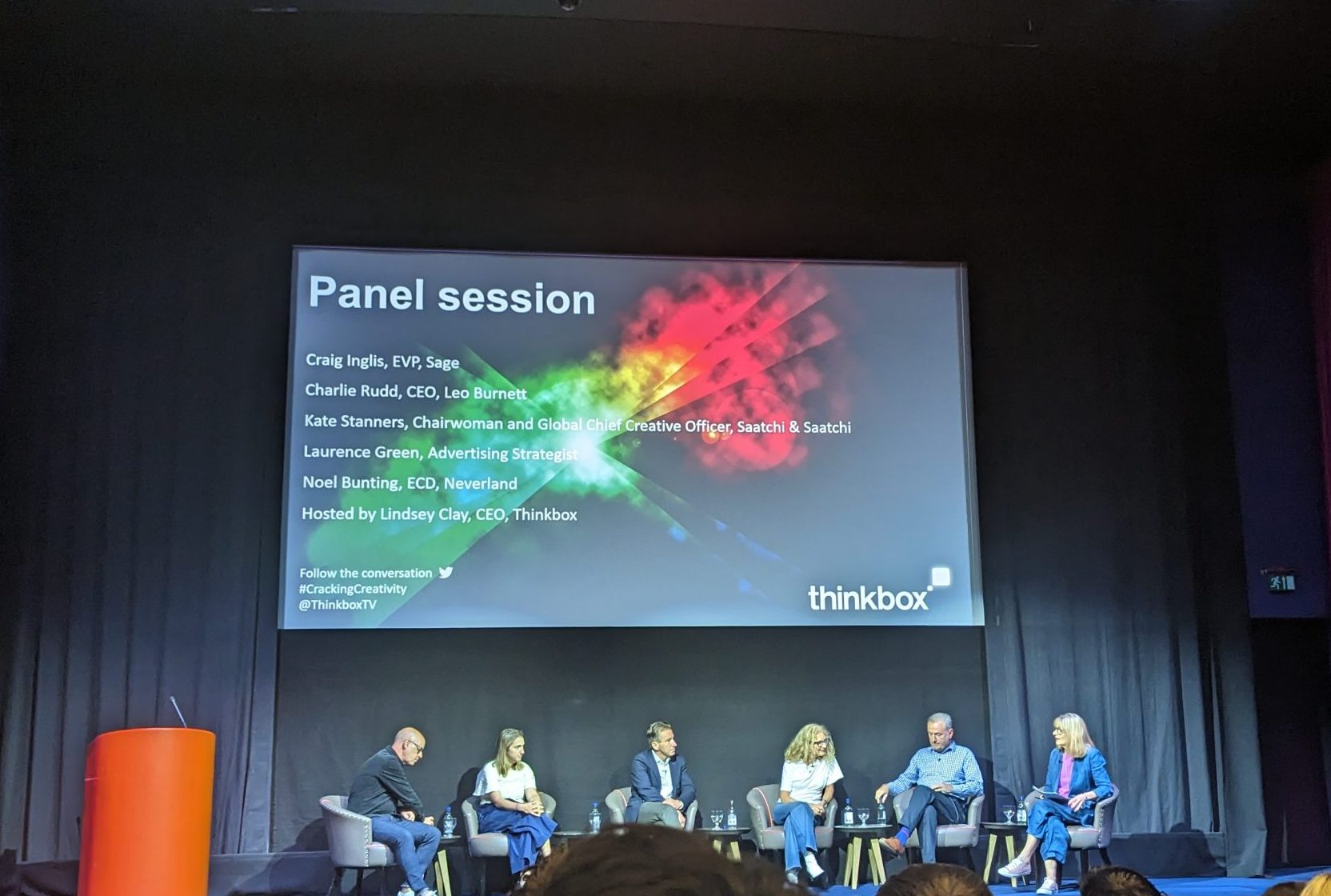Earlier this month, a few of our team members had the pleasure of attending Thinkbox’s ‘Cracking Creativity’ event, for an inspiring morning of talks about the power of creativity in advertising. We heard from those who ‘create the creative’, as well as from those who conceptualise and measure it. We asked one of Tapestry’s Senior Research Executives, Olga, to give us an overview of what she heard that morning:
The event kicked off with a presentation by Paul Dyson, (Accelero consulting), who opened the day claiming the ROI of creativity in advertising is often underestimated. It is hard to argue against him, considering the scope and detail of his research – Paul’s team looked at 28,000 ad campaigns, as well as hundreds of case studies, academic papers and industry reports, and discovered that creative is in fact the 2nd biggest factor influencing effectiveness of a marketing campaign – second after brand size only, making creative element the biggest leverage at a marketer’s disposal!
Next up, Rosie Pritchard from Neuro-Insight presented their latest piece of research into creative drivers of effectiveness – in other words, what are those elements, be they visual, storytelling or sonic, that are sure to drive brand’s KPIs? Using neuroimaging, Neuro-Insight measured the brain’s response to isolated ‘creative components’ – e.g. presence of actors, animals, babies, use of brand colours and story-related elements too. Their end goal was to see which of these ‘excite’ brain areas that are related to memorability, personal relevance, emotional impact and appeal, as these are the four factors attributed to commercial success. The results of this study are really interesting, and I highly recommend looking into it more, but here are just a few things that I enjoyed to see backed up by neuroimaging:
- People are paramount: using human characters in the story made the ads +24% more memorable. Having people on screen seemed to allow participants to really connect to the story, making it easier for the brain to understand the narrative and reducing cognitive load, which in turn led to an increase in memorability.
- Timing is everything: Neuro-Insight team claim to have uncovered that sweet spot – they found that while ads that lasted less than 20 secs lacked memorability and weren’t felt to be ‘motivating’, ads closer to 40 seconds saw a big drop in emotional impact. It seemed that 30 seconds was just long enough to enable narrative development, a key driver of memorability, but not too long for the emotional involvement to drop off, as your brain can’t keep up with the level of pace in the same way as it can with a 30 sec spot.
- And my personal favourite – Conceptual closure: have you ever noticed how in ad spots, before the final brand logo is shown , there is often a pause – sometimes a blank screen even, on which the logo then slowly emerges? Aside from the dramatic effect, there is actually science behind it which marketers have learnt and use – it relates to a phenomenon called ‘conceptual closure’. After our brain has had some exposure to new information, like to a new story or a narrative – it sort of runs out of memory space, and activity in areas of brain connected to memory encoding drop to a minimum. This is a reason to introduce a pause – literally, to let this encoding process come to a closure. The imaging has shown that any new information that enters the brain while the process is ending, has a much lower chance to be recalled later – hence the dramatic pause!
Finally, we got to hear more about creative from the superstars of the industry. Thinkbox asked advertising strategist, Laurence Green, to speak to the most senior agency and client executives about the state of creative advertising – where it’s at, where it’s headed, and what are the barriers that get in the way of creativity. Unsurprisingly, the one key, consistent barrier is Time – the consensus for all was that genius cannot be rushed. Another factor, which we all surely have an opinion on, is the environment that WFH/Hybrid working creates – many have mentioned the threat to the ‘sparks and serendipity’ that this set-up creates – according to the experts, the unmissable components to creating truly disruptive work!

All in all it was a fascinating morning – a huge thanks to Thinkbox for hosting this wonderful event!
If you’d like to find out more about how we measure the emotional power of advertising at Tapestry, get in touch with our Head of Advertising Research, Jemma.


